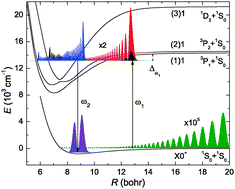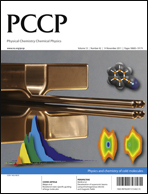Formation of ultracold SrYb molecules in an optical lattice by photoassociation spectroscopy: theoretical prospects
Abstract
State-of-the-art ab initio techniques have been applied to compute the potential energy curves for the SrYb molecule in the Born–Oppenheimer approximation for the electronic ground state and the first fifteen excited singlet and triplet states. All the excited state potential energy curves were computed using the equation of motion approach within the coupled-cluster singles and doubles framework and large basis-sets, while the ground state potential was computed using the coupled cluster method with single, double, and noniterative triple excitations. The leading long-range coefficients describing the dispersion interactions at large interatomic distances are also reported. The electric transition dipole moments have been obtained as the first residue of the polarization propagator computed with the linear response coupled-cluster method restricted to single and double excitations. Spin–orbit coupling

- This article is part of the themed collection: Physics and chemistry of cold molecules

 Please wait while we load your content...
Please wait while we load your content...